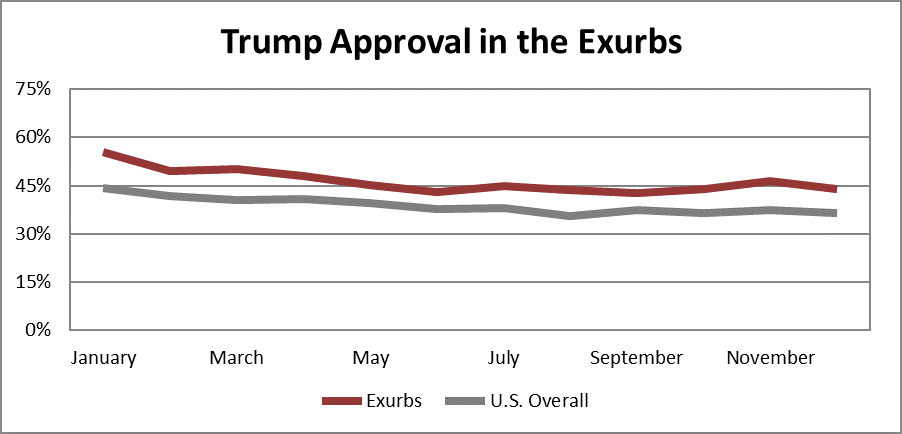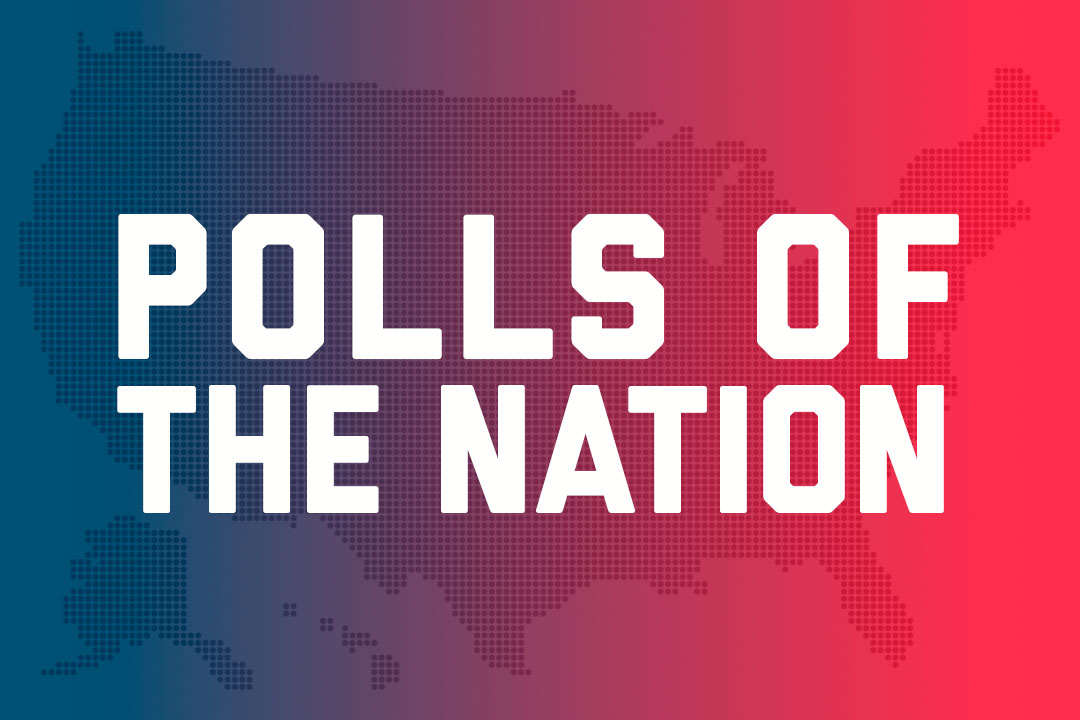By Dante Chinni
Research Professor and Director of the American Communities Project
At the one-year anniversary of Donald Trump’s inauguration, the American Communities Project is using 2017 data from Gallup to analyze how different kinds of communities have viewed the president’s job performance. Where are his strengths and weaknesses as year two begins?
Part One: The Exurbs

Public opinion polls, in general, were not kind to President Trump in his first year in office, but the drop in his approval in exurban counties was especially remarkable and potentially troubling for the White House. The decline in support there speaks to the challenges he faces with wealthy, “establishment” Republicans.
In January of 2017, 55 percent of those who lived in exurban counties approved of Trump’s job performance, according to monthly tracking data from Gallup. By December of 2017, the number had fallen to 44 percent — an 11-point decline. That was greater than the eight-point drop in approval among the Americans overall.
The exurbs, which sit on the outside edges of many metro areas around the country, have long been solidly Republican. George W. Bush, Mitt Romney and John McCain all won the exurbs with at least 56 percent of the vote in their presidential races. Trump also won about 56 percent of their vote in November of 2016. So any drop below 50 percent is not good news for a sitting GOP president.
But in Trump’s case, the bigger concern is the kind of Republican who lives in these 222 counties in yellow on the map below mostly around large metro areas.
At the beginning of 2018, the Republican Party’s base of support is largely rural, but it retains a semi-urban foothold in the exurbs. Geographically speaking, the exurbs represent the best-educated part of party’s base, 33 percent with a bachelor’s degree or more, and the part that is best off financially, with an average median household income of more than $64,000.
In short, the exurbs hold a large chunk of the GOP’s establishment voters and if people in them continue to turn against the president it could hurt the White House and the Republicans in two important ways in midterms this November.
First, exurban voters tend to bring the “chamber of commerce” sensibility to the party that is a moderating influence on the Republican’s social conservative wing. That sensibility is crucial to winning swing voters.
Second, these places have long held a huge cache of GOP votes at election time and their setting in major metro areas is crucial to Republican hopes of holding onto suburban House districts.
Dante Chinni directs the American Communities Project at the George Washington University and writes the “Politics Counts” blog for The Wall Street Journal. His research explores the divides in America by studying how demographic differences affect community economics, culture and politics.


